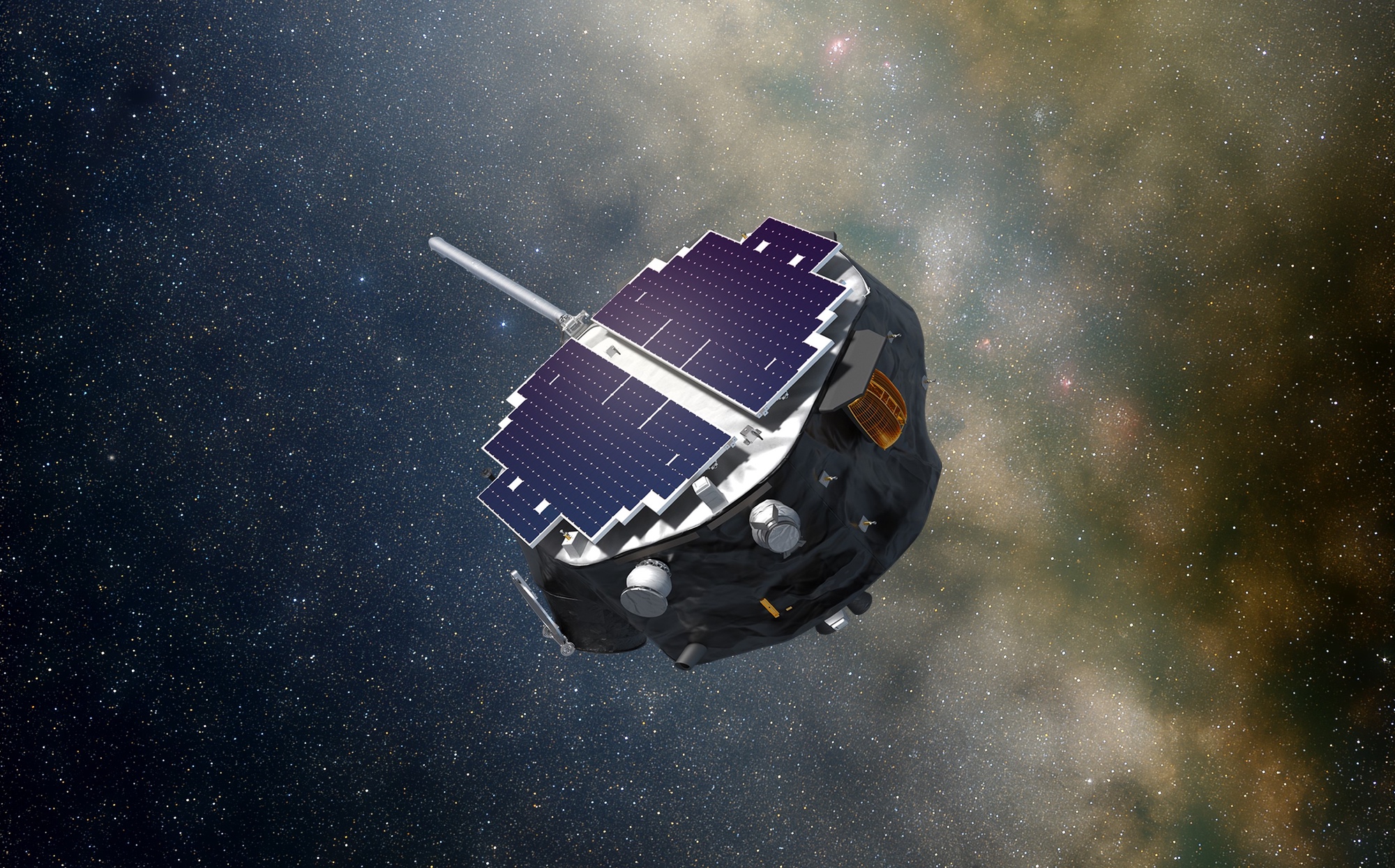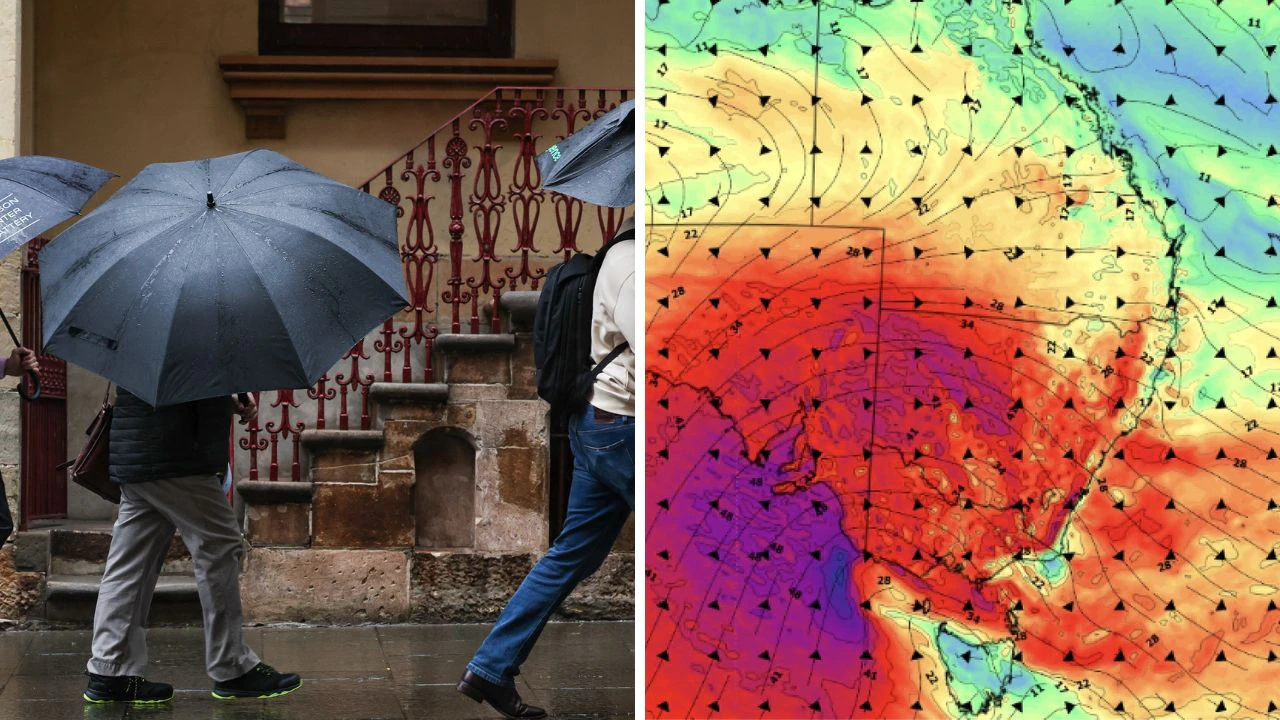
WASHINGTON — A Falcon 9 launched a “cosmic carpool” of spacecraft for NASA and NOAA Sept. 24 that will study the sun and its role in space weather.
The Falcon 9 lifted off from Kennedy Space Center’s Launch Complex 39A at 7:30 a.m. Eastern. The launch was scheduled for Sept. 23 but postponed a day because of delays getting the SpaceX droneship to the correct location in the Atlantic Ocean for the booster landing.
About one hour and 24 minutes after liftoff, the Falcon 9 upper stage deployed the primary payload on the launch, NASA’s Interstellar Mapping and Acceleration Probe, or IMAP. It was followed six and a half minutes later by NOAA’s Space Weather Follow On – Lagrange 1, or SWFO-L1, spacecraft. The third payload, the Carruthers Geocorona Observatory, deployed about six minutes after SWFO-L1.
All three spacecraft are headed to the Earth-sun L1 Lagrange point, 1.5 million kilometers from Earth in the direction of the sun. That is a preferred vantage point for uninterrupted monitoring of the sun and can provide an early warning of some space weather events before they reach Earth.
The launch was a cornerstone of NASA’s efforts to maximize the value of launches by flying additional payloads on missions that had excess capacity. “This is the ultimate cosmic carpool,” said Joe Westlake, director of NASA’s heliophysics division, during a pair of Sept. 21 briefings about the launch. “These three missions, heading out to the sun-Earth L1 point, riding along together, provides immense value for the American taxpayer.”
After NASA selected IMAP in 2018, NASA’s heliophysics division “had this wonderful idea of, we’re going out to L1, what else could we travel with,” recalled Nicky Fox, NASA associate administrator for science, at the briefings. That led to an “immediate partnership” with NOAA to include SWFO-L1 on the launch. A later call for rideshare payloads brought in Carruthers.
Two other spacecraft were once slated to fly on the same launch. Solar Cruiser, a technology demonstration mission to test a solar sail, was canceled in 2022 because of technical problems and lack of adequate funding to resolve them.
The Lunar Trailblazer mission to orbit the moon was taken off the IMAP launch in 2022 when NASA’s planetary science division, after IMAP’s launch slipped from 2024 to 2025, purchased a rideshare slot on the IM-2 commercial lunar lander mission that launched in February 2025. Lunar Trailblazer malfunctioned shortly after launch and was not recovered.
Even with three spacecraft instead of five, working to accommodate the different missions took “years of planning” with SpaceX, said Denton Gibson, launch director in NASA’s Launch Services Program, at the briefings.
One example of the unique issues with this launch was that all three missions had different requirements for pre-launch nitrogen purges, where gaseous nitrogen is used to prevent contamination and moisture on spacecraft instruments. “We had to build a unique system, a sort of three-headed beast of nitrogen purge, for all those spacecraft,” said Julianna Scheiman, director of NASA science missions at SpaceX.
Three related missions
After deployment, the spacecraft will take more than 100 days to reach the L1 point. The spacecraft will go through commissioning while in transit and should be fully operational once they arrive at L1.
IMAP is a 797-kilogram spacecraft that will spin every 15 seconds with instruments to measure the solar wind, high-energy particles and magnetic fields, all intended to help scientists understand the distant boundary between the solar wind and interstellar medium.
“That’s a really important place because it protects us from the vast majority of galactic cosmic radiation,” said David McComas, principal investigator for IMAP at Princeton University. “It’s not well understood, and IMAP’s going make incredibly detailed pictures that will evolve over time of that interaction region. We’ll be able to understand how the shielding works and what it looks like.”
He said IMAP should allow scientists to understand the evolution of solar wind particles as they head out from the sun to the heliopause, interact with other particles and return as energetic neutral atoms. “We’re able to do the entire lifecycle of these particles and understand, I think, for the first time the holistic view of how this region of space around us, the solar neighborhood, really works.”
Carruthers Geocoronal Observatory, originally called Global Lyman-alpha Imagers of the Dynamic Exosphere or GLIDE, is a 241-kilogram spacecraft to will observe a phenomenon known as the “geocorona” caused by ultraviolet emissions in the uppermost region of the Earth’s atmosphere, the exosphere. The geocorona was first seen by an instrument on Apollo 16 developed by the mission’s namesake, the late space scientist George Carruthers.
“The exosphere extends almost halfway to the moon, maybe,” said Lara Waldrop, principal investigator for the mission at the University of Illinois. “I say maybe because we don’t know exactly how big it is.”
The mission hopes to capture the full extent of the geocorona from the L1 point and make comprehensive measurements of its properties. That will help scientists see how the Earth recovers from geomagnetic storms, she said.
The third mission, SWFO-L1, is an operational rather than a research mission. NOAA’s Space Weather Prediction Center, or SWPC, will use data from the 377-kilogram SWFO-L1 to monitor solar activity and provide warnings of solar storms.
“It’s going to be the world’s first dedicated operational space weather satellite,” said Clinton Wallace, director of SWPC.
The center has been relying on data from two aging missions, ACE and SOHO. A third, DSCOVR, malfunctioned in mid-July and has not returned any data since then. “SWFO-L1 will be our insurance policy that keeps America space weather ready,” he said. “Without SFWO-L1, our ability to warn will quickly fade.”
IMAP has a total lifecycle cost of $781.8 million, which includes launch and operations for its two-year prime science mission. Carruthers has a lifecycle cost of $97 million, including a two-year prime mission. SWFO-L1 has a lifecycle cost of $692 million, which includes a separate coronagraph instrument flown on the GOES-U weather satellite as well as the mission’s ground segment. NASA spent $109.4 million on the Falcon 9 launch.



